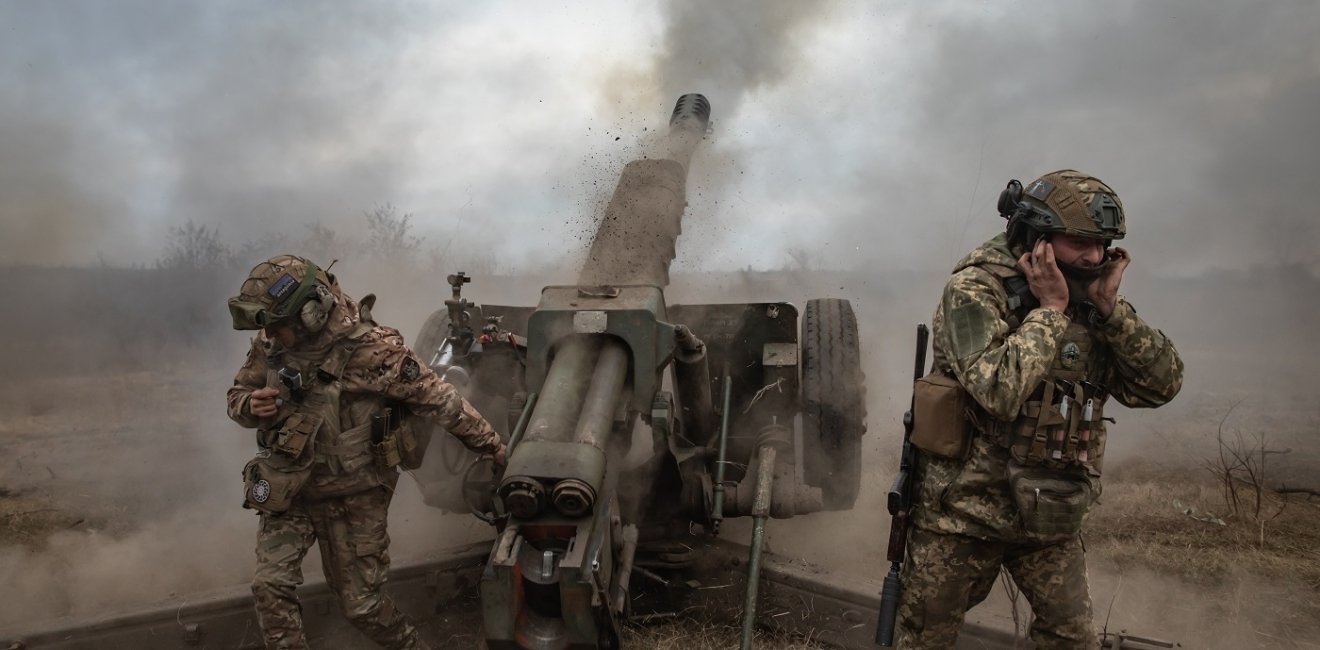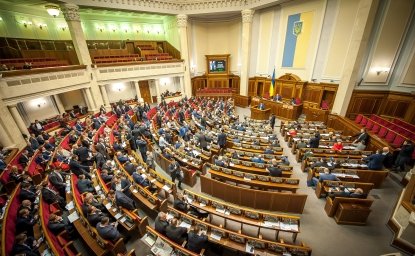
A blog of the Kennan Institute
Although Ukraine’s summer counteroffensive brought only modest results, there are broad indications that the cumulative strategy of pressuring Russia economically and militarily by Ukraine and its supporters is working. Internal problems with Russia’s cumbersome military institutions and issues affecting Russia’s ability to manufacture its most effective weapons mean that Ukraine has a chance to win what is rapidly turning into a war of attrition.
Russia’s Military Potential, Not Ukraine’s, Is Being Degraded
Russia’s formidable navy is mired in an increasingly dire strategic situation in the Black Sea. Ukraine has used its advantages in long-range precision targeting to inflict serious damage on the Russian fleet and Russian maritime military infrastructure, damage that Russia has struggled to respond to effectively. Russia has lost as much as a fifth of its Black Sea Fleet since summer 2023, including some of its most sophisticated ships.
In the skies above Ukraine, things aren’t going much better for Russia, with its air force unable to leverage much of its potential power. The growing density and sophistication of Ukrainian air defenses have greatly constrained Russia’s ability to operate its heaviest bombers beyond its forward line of troops.
Russia has tried to overcome this problem by relying on air-launched cruise missiles and glide bombs that can be dispatched from the safety of Russian airspace. But these weapons are significantly more expensive and difficult for Russia to manufacture than is its much larger and less used supply of gravity bombs.
Russia will ensure an ample supply of cruise missiles and glide bombs for the duration of the war, but doing so will impose high costs on Russian industry. Bombardments massive enough to overcome Ukrainian air defenses can cost hundreds of millions or even billions of dollars to conduct, greatly adding to state spending, likely making it unsustainable over the long term.
For all the expense, none of these massive bombardments has yielded any decisive results in degrading Ukrainian military potential. This is largely because Ukraine’s strategic depth is not in Ukraine. Stocks of Ukrainian arms and ammunition and the facilities that produce them are shielded beneath the American nuclear umbrella in Europe and the United States. Russia as a combatant in the conflict does not enjoy this advantage. Ukraine has increasingly threatened Russian industry through its acquisition and development of longer-range missiles and its expanding sabotage operations.
Russia did succeed in briefly slowing the onslaught of Ukrainian long-range strikes on its industry and high-value military equipment with increased electronic jamming of Western-supplied precision guided munitions. But these adaptations have proven fleeting as Ukraine has adapted its own tactics and gained additional military capabilities in recent months. One of the most significant of these new capabilities has been American cluster munitions. Cluster munitions provide Ukraine with an alternative to smart weapons for interdicting mobile, high-value Russian targets by enabling a rapid massing of firepower over a large area.
The cumulative effects of the past several months of stepped-up Ukrainian attacks on Russian logistics, air defenses, and artillery have been devastating for the Russian military. On the ground, Russia’s rate of artillery fire has fallen dramatically, from a high of 45,000−80,000 shells per day during Russia’s summer offensive in 2022 to 10,000−15,000 shells per day by the beginning of fall 2023. This is a serious problem for the Russian military as artillery units have arguably been its most effective fighting force, responsible for inflicting as many as 70 percent of all Ukrainian casualties.
Russian forces have continued to resist Ukrainian advances behind a formidable defensive network and in some cases have even advanced. But even these positive results for the Russian military have come at a tremendous cost, with the total number of Russian casualties surpassing 315,000 and growing rapidly. The ongoing offensive Russia launched around Avdiivka closely resembles its disastrous operations in Vuhledar and its pyrrhic victory in Bakhmut in the spring of 2023. The ongoing strategy of throwing away huge numbers of lives and equipment to achieve meager ends is degrading morale and leadership and shows that the Russian military is either unwilling or unable to learn from past mistakes. None of these explanations bodes well for Russia’s prospects in a long war.
Russia’s State-Level Problems
The constraints and persistent problems Russia faces at sea, on land, and in the air are symptoms of bigger problems within the Russian state. Russia’s continued underperformance suggests that it lacks the ability to make full use of its theoretically greater military potential.
Russia has more manpower than Ukraine, but it is unlikely to make full use of that advantage. Regardless of what any poll may say, the war is self-evidently unpopular among Russians of military age, who have fled the country by the hundreds of thousands since the beginning of the war. Previous attempts to mobilize recruits have greatly accelerated human capital flight. Russian leaders routinely claim that incredible numbers of patriotic volunteers are entering military service, but these boasts are undercut by steps that reek of desperation for manpower, such as greatly lowering standards for citizenship to attract military recruits from abroad.
Government efforts to bolster the appeal of military service face a long-term uphill battle as the number of Russian casualties mounts. Maimed veterans will increasingly become the face of the war in Russia: Russian officials have suggested that as many as half of all soldiers wounded in Ukraine sustained at least one limb amputation.
Even if Russia’s recruitment and mobilization systems are reformed, the military itself will still face inherent limits on the number of troops it can put into the field. The June Wagner rebellion highlighted just how quickly the Russian state can be paralyzed by armed internal revolts when disaffected actors organize. As a result, it is reasonable to assume that there will be limits on the size of the Russian population under arms at any given time, well below the capacity of the Russian military to deploy effectively.
This theoretical limit may even exceed that of the maximum size force the Russian military can actually employ in combat. The biggest army the Russians can put into the field may not be all that much bigger than what it has already deployed. Russia struggles to execute combined arms operations with the army’s present size. Attempts by Russia to gain an advantage by putting an even larger army in the field without addressing these institutional problems may just result in more poorly coordinated and disorganized human wave attacks.
The Cost of the War—to Russia
Russia may have gained control of 18 percent of Ukraine, but doing so has cost nearly eighteen years of military modernization and has exposed serious institutional weaknesses. If Ukraine maintains its determination and retains external support, it can win a war of attrition. The continued battering of both the Russian military and the Russian economy will eventually force Moscow to choose between an indecisive end to the war or risk Russia losing its place as a major power as the West slowly but massively re-arms over the next several years.
The opinions expressed in this article are those solely of the author and do not reflect the views of the Kennan Institute.
Author


Kennan Institute
After more than 50 years as a vital part of the Wilson Center legacy, the Kennan Institute has become an independent think tank. You can find the current website for the Kennan Institute at kennaninstitute.org. Please look for future announcements about partnership activities between the Wilson Center and the Kennan Institute at Wilson Center Press Room. The Kennan Institute is the premier US center for advanced research on Eurasia and the oldest and largest regional program at the Woodrow Wilson International Center for Scholars. The Kennan Institute is committed to improving American understanding of Russia, Ukraine, Central Asia, the South Caucasus, and the surrounding region through research and exchange. Read more

Explore More in Focus Ukraine
Browse Focus Ukraine
Talking to the Dead to Heal the Living

Ukrainian Issue in Polish Elections


